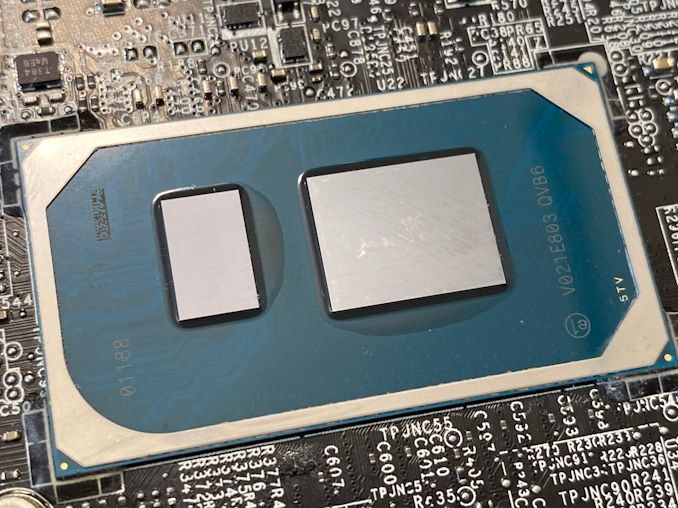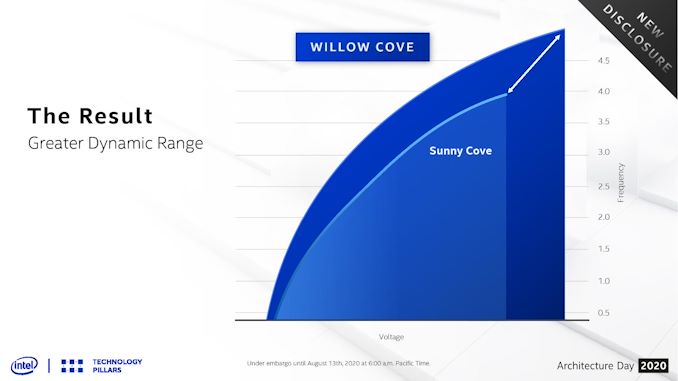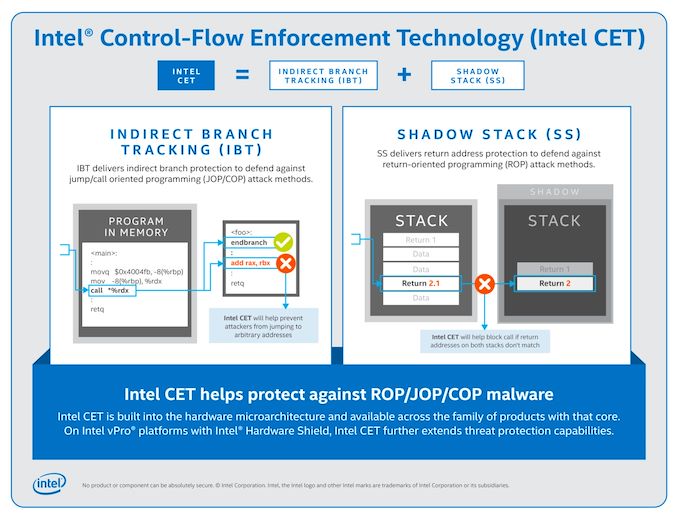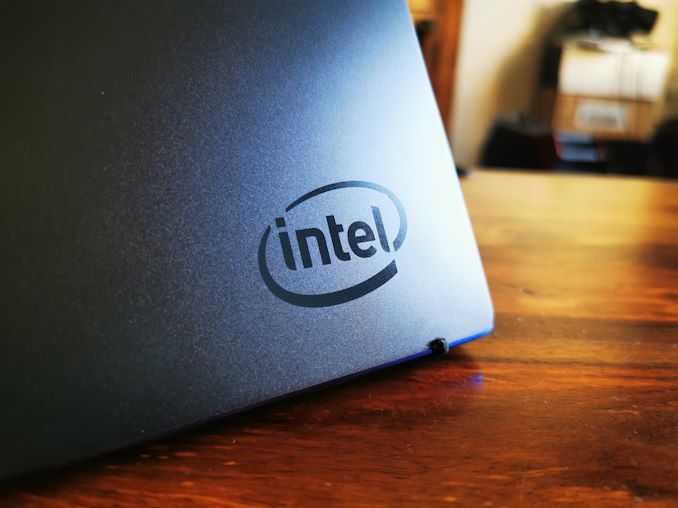Intel’s Tiger Lake 11th Gen Core i7-1185G7 Review and Deep Dive: Baskin’ for the Exotic
by Dr. Ian Cutress & Andrei Frumusanu on September 17, 2020 9:35 AM EST- Posted in
- CPUs
- Intel
- 10nm
- Tiger Lake
- Xe-LP
- Willow Cove
- SuperFin
- 11th Gen
- i7-1185G7
- Tiger King
Conclusion: Is Intel Smothering AMD in Sardine Oil?
Whenever a new processor family is reviewed, it is easy to get caught up in the metrics. More performance! Better power consumption! Increased efficiency! Better clock-for-clock gains! Amazing price! Any review through a singular lens can fall into the trap of only focusing on that specific metric. So which metrics matter more than others? That depends on who you are and what the product is for.
Tiger Lake is a mobile processor, featuring Intel's fastest cores and new integrated graphics built with an updated manufacturing process. This processor will be cast into the ultra-premium notebook market, as it carries the weight of the best Intel has to offer across a number of its engineering groups. Intel is actively working with its partners to build products to offer the best in performance for this segment right before a discrete GPU is absolutely needed.
As a road warrior, pairing the right performance with power efficiency is a must. In our benchmarks, due to the new process node technology as well as the updated voltage/frequency scaling, we can see that Tiger Lake offers both better performance at the same power compared to Ice Lake, but it also extends the range of performance over Ice Lake, assisted by that much higher turbo boost frequency of 4.8 GHz. When Tiger Lake gets into retail systems, particularly at the 15 W level, it is going to be fun to see what sort of battery life improvements during real-world workflows are observed.
As an engineer, genuine clock-for-clock performance gains get me excited. Unfortunately Tiger Lake doesn't deliver much on this front, and in some cases, we see regressions due to the rearranged cache depending on the workload used. This metric ignores power - but power is the metric on which Tiger Lake wins. Intel hasn't really been wanting to talk about the raw clock-for-clock performance, and perhaps understandably so (from a pure end-user product point of view at any rate).
Tiger Lake has updates for security as well as Control-Flow Enforcement Technology, which is a good thing, however these are held behind the vPro versions, creating additional segmentation in the product stack on the basis of security features. I’m not sure I approve of this, potentially leaving the non-vPro unsecure and trying to upsell business customers for the benefit.
The new Tiger Lake stills falls down against the competition when we start discussing raw throughput tests. Intel was keen to promote professional workflows with Tiger Lake, or gaming workflows such as streaming, particularly at 28 W rather than at 15 W. Despite this we can easily see that the 15 W Renoir options with eight cores can blow past Tiger Lake in a like-for-like scenario in our rendering tests and our scalable workloads. The only times Intel scores a win is due to accelerator support (AVX-512, DP4a, DL Boost). On top of that, Renoir laptops in the market are likely to be in a cheaper price bracket than what Intel seems to be targeting.
If Intel can convince software developers to jump on board with using its accelerators, then both the customers will benefit as will Intel’s metrics. The holy grail may be when it comes to OneAPI, enabling programmers to target different aspects of Intel’s eco-system under the same toolset. However OneAPI is only just entering v1.0, and any software project base building like that requires a few years to get off the ground.
For end-user performance, Tiger Lake is going to offer a good performance improvement over Ice Lake, or the same performance at less power. It’s hard to ignore. If Intel’s partners can fit 28 W versions of the silicon into the 15 W chassis they were using for Ice Lake, then it should provide for a good product.
We didn’t have too much time to go into the performance of the new Xe-LP graphics, although it was clear to see that the 28 W mode does get a good performance lift over the 15 W mode, perhaps indicating that DG1 (the discrete graphics coming later) is worth looking out for. Against AMD’s best 15 W mobile processor and integrated graphics, our results perhaps at the lower resolutions were skewed towards AMD, but the higher resolutions were mostly wins for Intel - it seemed to vary a lot depending on the game engine.
As a concept, Tiger Lake’s marketing frustrates me. Not offering apples-to-apples data points and claiming that TDP isn’t worth defining as a singular point is demonstrating the lengths that Intel believes it has to go to in order to redefine its market and obfuscate direct comparisons. There was a time and a place where Intel felt the need to share everything, as much as possible, with us. It let us sculpt the story of where we envisaged the market was going, and OEMs/customers were on hand to add their comments about the viewpoints of the customer base from their perspective. It let us as the press filter back with comments, critiques, and suggestions. The new twist from Intel’s client division, one that’s actually been progressing along this quagmire path, will only serve to confuse its passionate customer base, its enthusiasts, and perhaps even the financial analysts.
However, if we’re just talking about the product, I’m in two minds for Tiger Lake. It doesn’t give those raw clock-for-clock performance gains that I’d like, mostly because it’s almost the same design as Ice Lake for the CPU cores, but the expansion of the range of performance coupled with the energy efficiency improvements will make it a better product overall. I didn’t believe the efficiency numbers at first, but successive tests showed good gains from both the manufacturing side of Intel as well as the silicon design and the power flow management. Not only that, the new Xe-LP graphics seem exciting, and warrant a closer inspection.
Tiger Lake isn’t sardine oil basting AMD just yet, but it stands to compete well in a number of key markets.














253 Comments
View All Comments
ikjadoon - Thursday, September 17, 2020 - link
You wrote this twice without any references, but I'll just write this once:AMD is literally moving to custom Wi-Fi 6 modems w/ Mediatek (e.g., like ASMedia and AMD chipsets): https://www.tomshardware.com/news/report-amd-taps-...
PCIe4: it doesn't need to 'max out' a protocol to be beneficial and likewise allows fewer lanes for the same bandwidth (i.e., PCIe Gen4 also powers the DMI interface now, no?).
Thunderbolt 4 is genuinely an improvement over USB4. Anandtech wrote an entire article about TB4: https://www.anandtech.com/show/15902/intel-thunder... (mandates unlike USB4, 40 Gbps, DMA protection, wake-up by dock, charging, daisychaining, etc). Anybody who's bought a laptop in the past two years know that "USB type-C" is about as informative as "My computer runs an operating system."
AVX512 / DLboost: fair, nobody cares on a thin-and-light laptop.
LPDDR5 is likely coming in 2021 to a Tiger Lake refresh around CES. Open game how many OEMs will wait; noting very few of the 100s of laptop design wins have been released, I suspect many top-tier notebooks will wait.
Billy Tallis - Thursday, September 17, 2020 - link
I'd be surprised if the chipset is using gen4 speeds for the DMI or whatever they call it in mobile configurations. The PCIe lanes downstream of the chipset are all still gen3 speed, so there's not much demand for increased IO bandwidth. And last time, Intel took a very long time to upgrade their chipsets and DMI after their CPUs started offering faster PCIe on the direct attached lanes.JayNor - Saturday, September 19, 2020 - link
4 lanes of pcie4 are on the cpu chiplet, as are the thunderbolt io. They can be used for GPU or SSD.Billy Tallis - Saturday, September 19, 2020 - link
Did you mean to reply to a different comment?RedOnlyFan - Friday, September 18, 2020 - link
Lol this is so uneducated comment. Telling wrong stuff twice doesn't make it correct.Pcie4 implemented properly should consume less power than pcie3.
Thunderbolt 4 is not USB 4. Only tb3 was open sourced to USB 4 so USB 4 will be a subset for tb3 thank Intel for that.
There are more AI/ML used in the background than you realize. If you expect people to do highly multi threaded rendering stuff.. Why not expect AI/ML stuff?
And 2022 is still 1.5 year away. So amd is entering the party after its over.
JayNor - Saturday, September 19, 2020 - link
Thunderbolt 4 doubles the pcie speed vs Thunderbolt 3 that was donated for USB. Intel has also now donated the Thunderbolt 4 spec.Spunjji - Friday, September 18, 2020 - link
They have 4 (four) lanes of PCIe 4.0 - that provides the same bandwidth as Renoir's 8 lanes of 3.0I get that you're one of those posters who just repeats a list of features that Intel has and AMD doesn't in order to declare a "win", but seriously, at least pick one that provides a benefit.
JayNor - Saturday, September 19, 2020 - link
The m.2 pcie4 chips use 4 lanes. Seems like a good combo with Tiger Lake. AMD would need to use up 8 lanes to match it with their current laptop chips.Rudde - Saturday, September 19, 2020 - link
Problem is that there isn't any reasonable mobile pcie4 SSDs yet. Same problem with lpddr5. Tiger Lake will get them when they become available. Renoir was released half a year ago; all AMD based laptops will wait for next gen before adopting these technologies anyway.If you want to argue that AMD is behind, highlight what Ice Lake has, but Renoir doesn't have.
Spunjji - Saturday, September 19, 2020 - link
Why would they bother? There are no performance benefits to using a PCIe 4 SSD in the kinds of systems TGL will go into. You can't get data off it fast enough for the read speed to matter, and it has no effect on any of the applications anyone is likely to use on a laptop that has no GPU. This is aside from Rudde's point about there currently being no products that suit this use case.